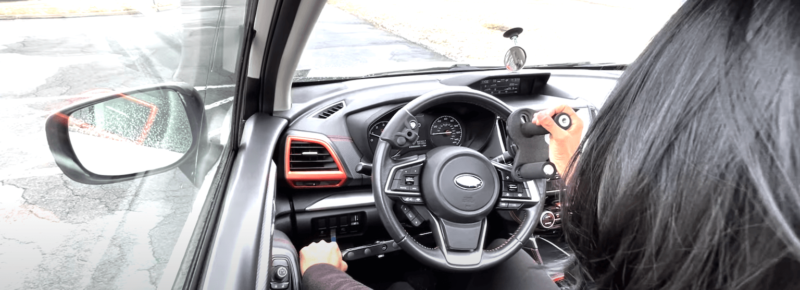
Driving With An Amputation
Limb amputation is a major life change that can impact many facets of your life, including driving. It’s important to understand that with the right adaptive equipment and vehicle modifications, it is possible to safely return to driving after limb amputation. By working with your team of healthcare professionals and an Occupational Therapy Driver Rehabilitation Specialist (OT DRS) you can obtain the adaptive equipment you need to return to driving and obtain specialized training to ensure safety on the road.
The Impact of Amputation On Driving
The location and nature of the amputation can have a significant impact on an individual’s capacity to drive. The challenges faced by someone who has had an amputation of the right leg will be very different from those of someone who has had an upper limb amputation. Understanding these unique challenges is important for those who have undergone an amputation and wish to return to driving. With the support of loved ones, medical practitioners, and an OT driver rehabilitation specialist, the correct adaptive driving solutions can be found.
Learn From Fran Who Lost Both Legs In An Accident
In the below video she shares her experience learning with Susie using hand controls. She’s excited to grocery shop for the first time in a year and a half as well as stopping to get Starbucks!
The Role of Adaptive Equipment In Driving
Adaptive equipment can be a great option for helping amputees to safely return to driving. It is important to note that not every vehicle is suitable for adaptive driving modifications, though. Depending on the specific needs of the individual and their capabilities, an OT DRS can provide a prescription for adaptive driving equipment. This prescription will be given after the a comprehensive driving assessment and driver rehab training is completed with the patient. Some states will also require the driver to receive updated permissions on their license to drive with adaptive equipment. Your OT DRS will be able to inform and help you with your state’s specific process. Common types of adaptive equipment for amputees include:
- Hand Controls: Allow drivers to control the gas and brake pedals with one hand, rather than the foot. This equipment is extremely helpful for those unable to drive with their right leg or both legs.
- Spinner Knobs: Assist with steering, making it easier to turn the steering wheel with one hand. This type of adaptive equipment is helpful for those who have experienced an upper limb amputation or who drive with hand controls.
- Left Foot Accelerator: This adaptive equipment allows individuals with right foot or right leg amputations to operate the gas and brake pedals with their left foot, rather than the typical right foot controls.
The Importance of Training With Adaptive Equipment
Driving successfully and safely after an amputation requires more than just having adaptive equipment installed in your vehicle – it requires proper training. Individuals need to be taught how to use their new adaptive equipment in a safe and efficient manner before taking to the roads. This is where it can be especially helpful to consult with an OT DRS. The driver rehabilitation specialist can provide personalized training to ensure that individuals with amputations are confident and competent behind the wheel.
Elaine Lost Her Right Leg & Learned How To Drive With A Left Foot Accelerator
Hear from Elaine about her experience learning to drive with a left foot accelerator. Her story is so encouraging for anyone who has experienced a limb amputation.
Safely Return To Driving With Adaptive Mobility
At Adaptive Mobility, we are dedicated to helping individuals drive safely and independently after illnesses or injuries. By working with an OT Driver Rehabilitation Specialist in our national network, you can obtain a comprehensive driving assessment and training to ensure safe driving habits moving forward. Contact us today to learn more about our driver rehabilitation specialists and services.
Meet Susie!

Susie Touchinsky, OTR/L, SCDCM, CDRS, is an established expert in both occupational therapy and driver rehabilitation. She has been an OT for more than 20 years and brings expertise and a love for helping others in her speeches and trainings.
Learn More With Our OT Driver Rehabilitation Specialist Courses
Try Our Free OT DRS Courses:
- OTs Role With Driving
- GRID: Generalist Resource to Integrate Driving
- Readiness to Drive: IADL Checklist
- FREE 6 Driving Resources for the OT
- 5-Steps Our Clients Use to Start Their Own Highly-Paid OT Driver Rehab Business
- Driving Risk Screening Tools
- BCAT Brief Cognitive Assessment Test System Overview
- BCAT Part 2: CBS 8 & 15-for-Me
Become the best OT Driver Rehabilitation Specialist you can be by being a life long learner.
